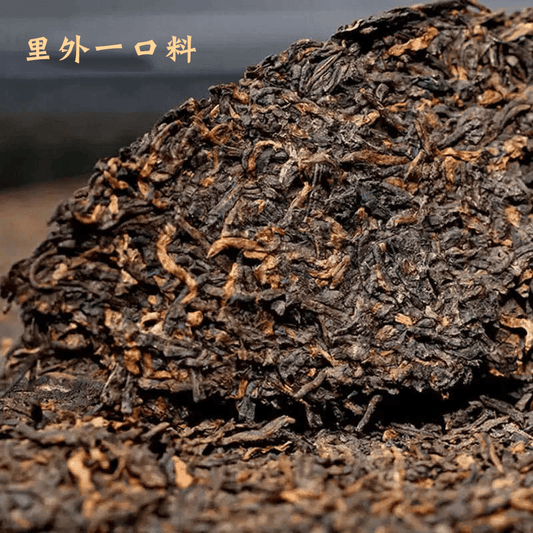Chinese Dark Tea: The Mellow Beauty Tempered by Time
——A Tasting Guide & Cultural Exploration
I. Introduction: A Treasure of Tea, Refined Over Millennia
Dark tea (黑茶, hēichá), one of China's six major tea categories, is a post-fermented tea renowned for its "aging potential." Through unique processes like pile fermentation (wòduī) and natural aging, it develops a smooth, rich flavor and distinctive earthy aroma. Key producing regions include Hunan's Anhua, Yunnan (ripe Pu-erh), Guangxi's Liubao, and Sichuan's Ya'an, each with its own terroir.
Core Characteristics:
l Unique Processing: Pile fermentation + microbial aging create complex bioactive compounds.
l Health Benefits: Rich in tea polysaccharides and probiotics, aids digestion and counters greasy foods—historically called the "life tea of the frontier."
l Collectible Value: Improves with age, earning the title "drinkable antique."
II. The Dark Tea Family: Four Classic Styles
-
Hunan Anhua Dark Tea
l Varieties: Fu Brick (with golden "flower" fungi), Qianliang Tea (tightly pressed columns).
l Flavor: Pine-smoked woodiness, sweet malt notes; "golden flowers" add a floral-fungal aroma.
-
Yunnan Ripe Pu-erh
l Process: Accelerated pile fermentation for deep ruby liquor.
l Flavor: Creamy with dates or rice pudding richness.
-
Guangxi Liubao Tea
l Signature: "Red, thick, aged, mellow"—distinct betel nut spice, prized for dampness relief.
l Legacy: A favorite among Southeast Asian diaspora.
-
Sichuan Tibetan Tea (Zangcha)
l Role: Traditional "border tea" for high-altitude diets, with toasty caramel notes.
III. Tasting Guide: 5 Steps to Savor Dark Tea
1. Observe
l Dry leaves: Compressed tea should be glossy black-brown; loose leaves thick and sturdy. "Golden flowers" (in Fu Brick) should be evenly distributed.
l Liquor: Aged tea shows crimson clarity; younger brews lean amber.
2. Inhale
l Youthful tea: Earthy, woody; aged tea: medicinal, dried fruit, or jujube sweetness.
l Warning: Mold or sourness indicates poor storage.
3. Taste
l Quality markers: Velvety texture, zero astringency, lingering sweetness.
l Aged tea: Brothy umami, like rice porridge coating the tongue.
4. Check the Leaves
l Spent leaves: Supple and reddish-brown, free of hard stems.
5. Serving Tips
l Traditional: Brew in purple clay (zisha) or gaiwan at 100°C.
l Creative: Add milk, honey, or aged tangerine peel; boiling enhances depth.
IV. Storage & Aging
l Environment: Dark, ventilated, dry (humidity <60%), away from odors.
l Containers: Ceramic jars or unglazed clay vessels; Pu-erh thrives in original paper wrappers.
l Timeline: 3 years for initial complexity; 10+ years for transcendent smoothness.
V. Cultural Threads
From caravan trails of the Ancient Tea-Horse Road (Chá-Mă Dào) to modern tea ceremonies, dark tea bridges nomadic traditions and Han craftsmanship. Whether in a Tibetan butter tea or a literati's meditative brew, it embodies resilience and harmony.
Closing:
Dark tea’s magic lies in time’s alchemy. Within each compressed cake or mossy brick, landscapes and lifetimes converge. At first sip, it may seem austere—but patience reveals its grace. Like life itself, it deepens with age.

![2009 Spring Yunnan Premium Shu Puer Tea Cake [Mansong] - YIQIN TEA HOUSE | yiqinteahouse.com | dark tea, pu-er, puer, shu puer, tea](http://yiqinteahouse.com/cdn/shop/products/2009-spring-yunnan-premium-shu-puer-tea-cake-mansong-yiqin-tea-house-yiqinteahouse-com-1.jpg?v=1723791489&width=533)
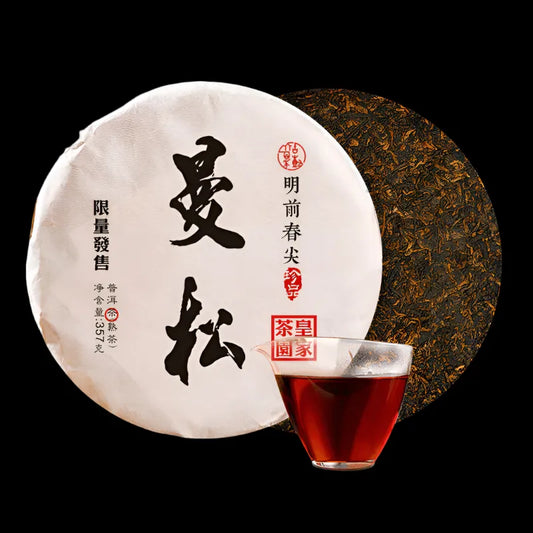
![2009 Spring Yunnan Premium Shu Puer Tea Cake [Bingdao Golden Buds] - YIQIN TEA HOUSE | yiqinteahouse.com | dark tea, pu-er, puer, shu puer, tea](http://yiqinteahouse.com/cdn/shop/files/2009-spring-yunnan-premium-shu-puer-tea-cake-bingdao-golden-buds-yiqin-tea-house-yiqinteahouse-com-1.jpg?v=1723793726&width=533)
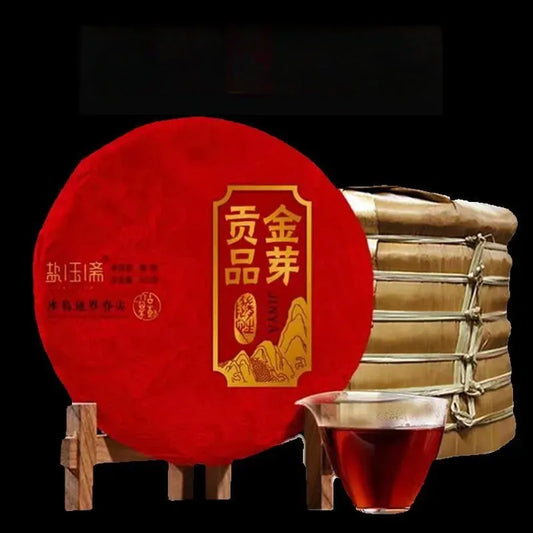
![2006 Yunnan Shu Pu-er Tea Cake [Lao Ban Zhang] - YIQIN TEA HOUSE | yiqinteahouse.com | dark tea, pu-er, puer, shu puer, tea](http://yiqinteahouse.com/cdn/shop/files/2006-yunnan-shu-pu-er-tea-cake-lao-ban-zhang-yiqin-tea-house-yiqinteahouse-com-1.jpg?v=1723791430&width=533)
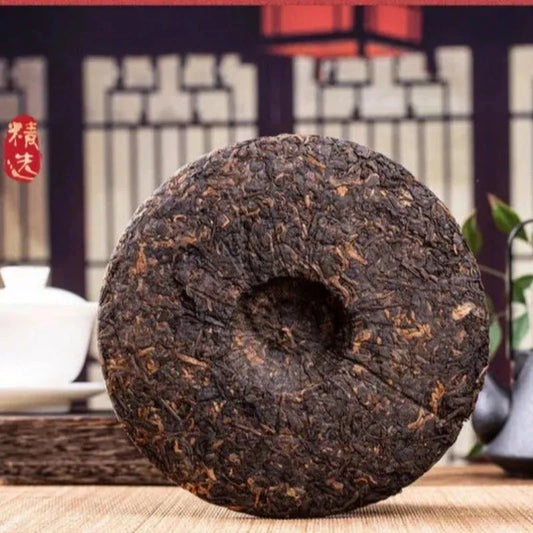
![2006 Spring Yunnan Shu Puer Tea Cake [Bingdao] - YIQIN TEA HOUSE | yiqinteahouse.com | dark tea, pu-er, puer, shu puer, tea](http://yiqinteahouse.com/cdn/shop/files/2006-spring-yunnan-shu-puer-tea-cake-bingdao-yiqin-tea-house-yiqinteahouse-com-1.jpg?v=1723792931&width=533)
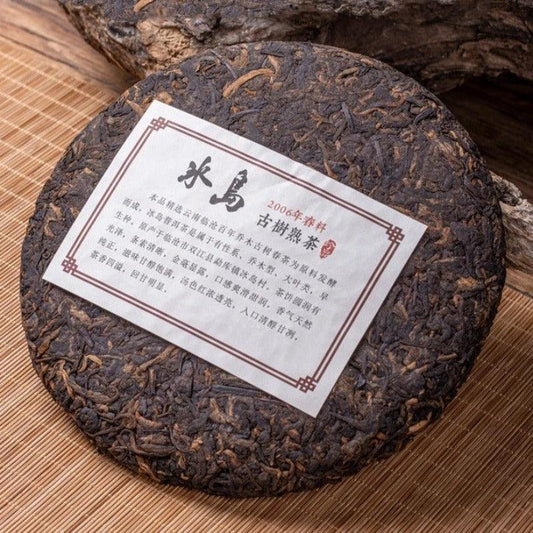
![2019 Yunnan Sheng Puer Tea Cake [Bulang Shan] - YIQIN TEA HOUSE | yiqinteahouse.com | dark tea, pu-er, puer, sheng puer, tea](http://yiqinteahouse.com/cdn/shop/products/2019-yunnan-sheng-puer-tea-cake-bulang-shan-yiqin-tea-house-yiqinteahouse-com-1.jpg?v=1723791451&width=533)
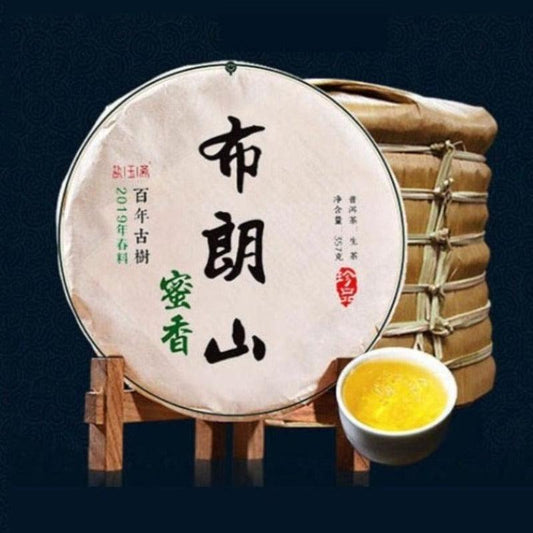
![Premium Xin Hui [Mandarin Puer] Dark Tea Canned Gift Set 250/500g](http://yiqinteahouse.com/cdn/shop/files/a4ffc7a8e1aeba3922e6bc87d150a388.jpg?v=1736049183&width=533)
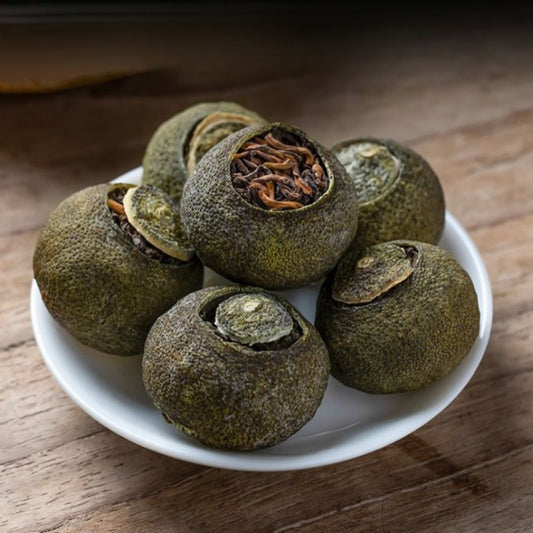
![2022 Spring Yunnan Shu Puer Tea Cake [Chrysanthemum] - YIQIN TEA HOUSE | yiqinteahouse.com | dark tea, pu-er, puer, shu puer, tea](http://yiqinteahouse.com/cdn/shop/files/2022-spring-yunnan-shu-puer-tea-cake-chrysanthemum-yiqin-tea-house-yiqinteahouse-com-1.jpg?v=1723794241&width=533)
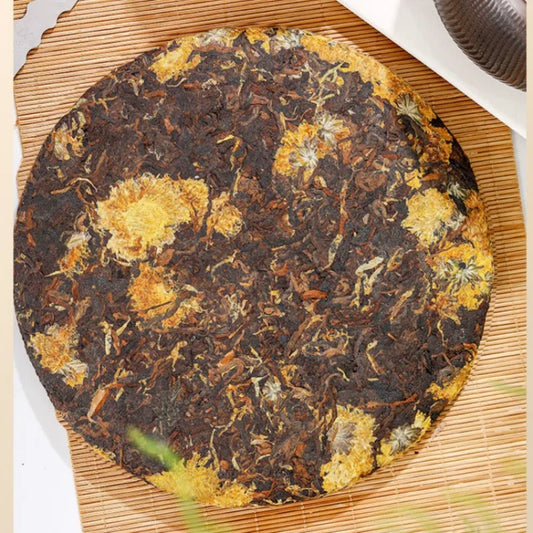
![2019 Spring Yunnan Premium Shu Puer Tea Cake [Midi] - YIQIN TEA HOUSE | yiqinteahouse.com | dark tea, pu-er, puer, shu puer, tea](http://yiqinteahouse.com/cdn/shop/files/2019-spring-yunnan-premium-shu-puer-tea-cake-midi-yiqin-tea-house-yiqinteahouse-com-1.jpg?v=1723794192&width=533)
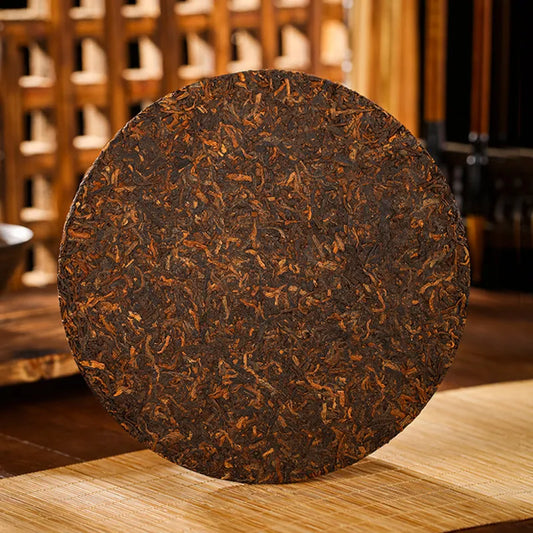
![2020 Spring Yunnan Sheng Puer Tea Cake [Yun Cha Yinxiang] - YIQIN TEA HOUSE | yiqinteahouse.com | dark tea, pu-er, puer, sheng puer, tea](http://yiqinteahouse.com/cdn/shop/files/2020-spring-yunnan-sheng-puer-tea-cake-yun-cha-yinxiang-yiqin-tea-house-yiqinteahouse-com-1.jpg?v=1723794205&width=533)
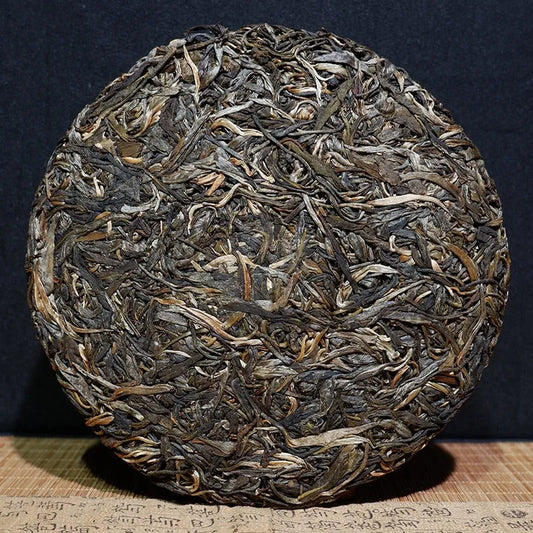
![2008 Yunnan Menghai Qizi Shu Puer Tea Cake [Lao Pu-er] - YIQIN TEA HOUSE | yiqinteahouse.com | dark tea, pu-er, puer, shu puer, tea](http://yiqinteahouse.com/cdn/shop/products/2008-yunnan-menghai-qizi-shu-puer-tea-cake-lao-pu-er-yiqin-tea-house-yiqinteahouse-com-1.jpg?v=1723791463&width=533)
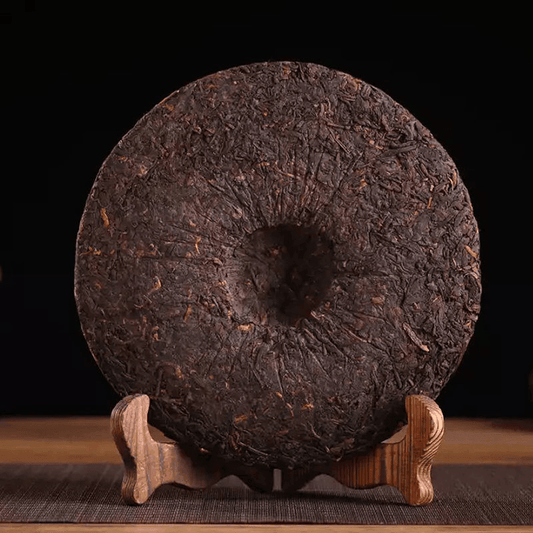
![2012 Spring Yunnan Sheng Puer Tea Cake [Meng Ku]](http://yiqinteahouse.com/cdn/shop/files/1b1df94852ea43d3093642a6bde37b97.jpg?v=1761015524&width=533)
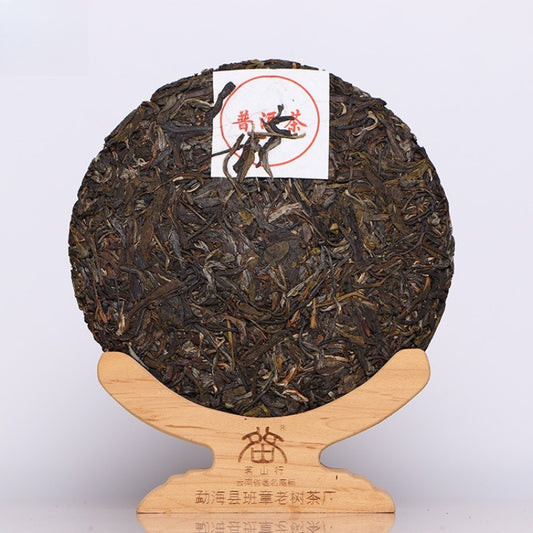
![2012 Spring Yunnan Sheng Puer Tea Cake [Xiao Hu Sai]](http://yiqinteahouse.com/cdn/shop/files/82b4fc0d8c17946962753960a7a97cee.jpg?v=1760106356&width=533)
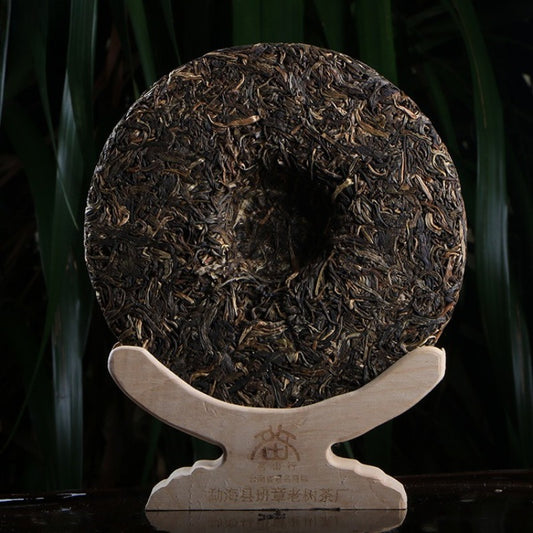
![2012 Spring Yunnan Premium Shu Puer Tea Cake [Buland Golden Buds]](http://yiqinteahouse.com/cdn/shop/files/4eeaad529533ec6a067e6a9f24e742cb.jpg?v=1759979546&width=533)
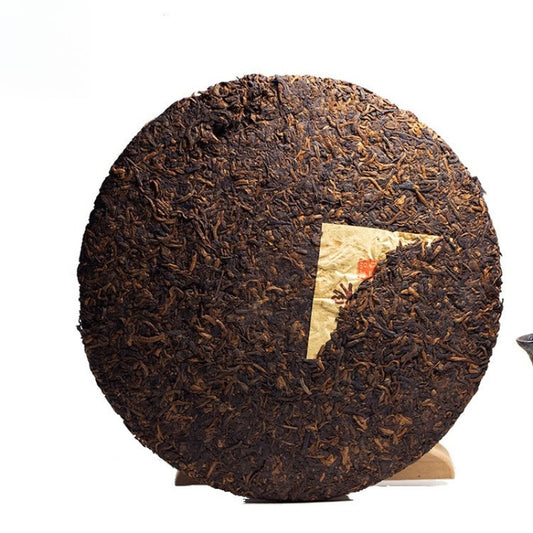
![2019 Spring Yunnan Shu Puer Tea Cake [Ding Jia Zhai] - YIQIN TEA HOUSE | yiqinteahouse.com | dark tea, pu-er, puer, shu puer, tea](http://yiqinteahouse.com/cdn/shop/files/2019-spring-yunnan-shu-puer-tea-cake-ding-jia-zhai-yiqin-tea-house-yiqinteahouse-com-1.jpg?v=1724351023&width=533)
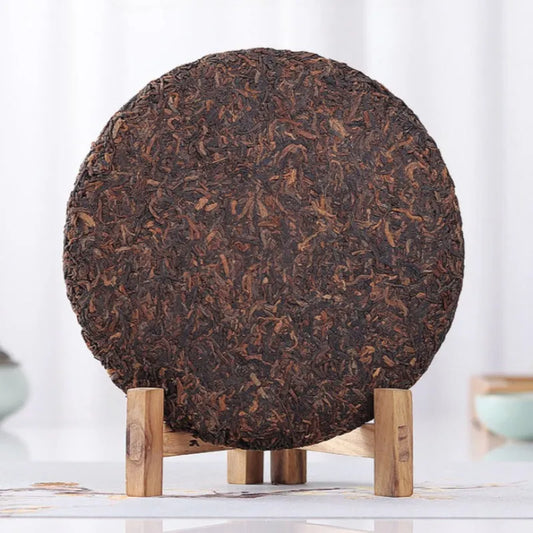
![2018 Spring Yunnan Sheng Puer Tea Cake [Xi Gui] - YIQIN TEA HOUSE | yiqinteahouse.com | dark tea, pu-er, puer, sheng puer, tea](http://yiqinteahouse.com/cdn/shop/files/2018-spring-yunnan-sheng-puer-tea-cake-xi-gui-yiqin-tea-house-yiqinteahouse-com-1.jpg?v=1723794183&width=533)
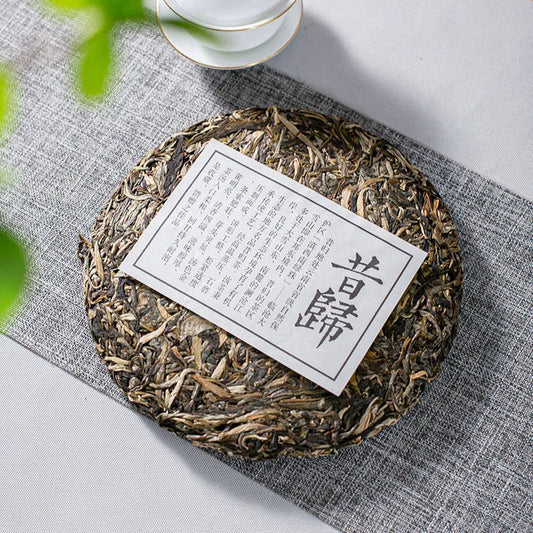
![2009 Spring Yunnan Shu Puer Tea Cake [Bingdao] - YIQIN TEA HOUSE | yiqinteahouse.com | dark tea, pu-er, puer, shu puer, tea](http://yiqinteahouse.com/cdn/shop/products/2009-spring-yunnan-shu-puer-tea-cake-bingdao-yiqin-tea-house-yiqinteahouse-com-1.jpg?v=1723791441&width=533)
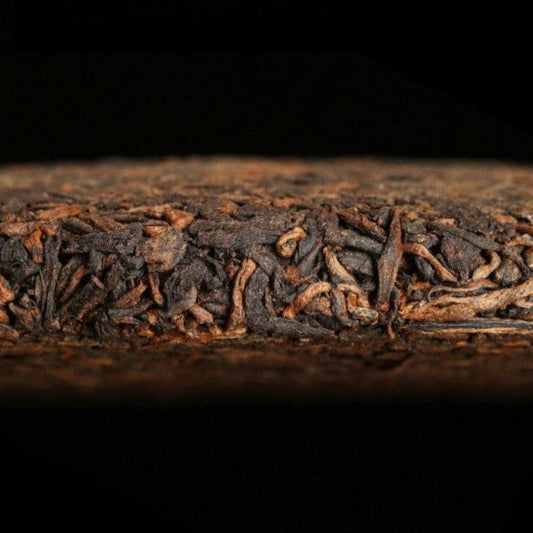
![2012 Spring Yunnan Sheng Puer Tea Cake [Nan Nuo]](http://yiqinteahouse.com/cdn/shop/files/4b39163f3d80478070d27912c79f7418.jpg?v=1761014018&width=533)
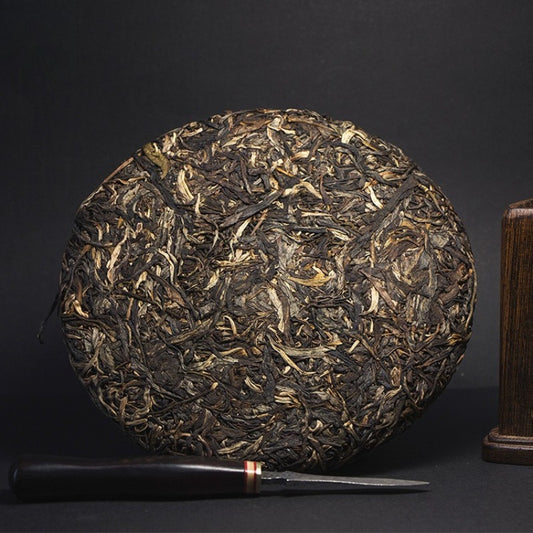
![2012 Spring Yunnan Shu Puer Tea Cake [Nan Nuo]](http://yiqinteahouse.com/cdn/shop/files/3f7447187c5f51331114235162e609a4.jpg?v=1761008315&width=533)
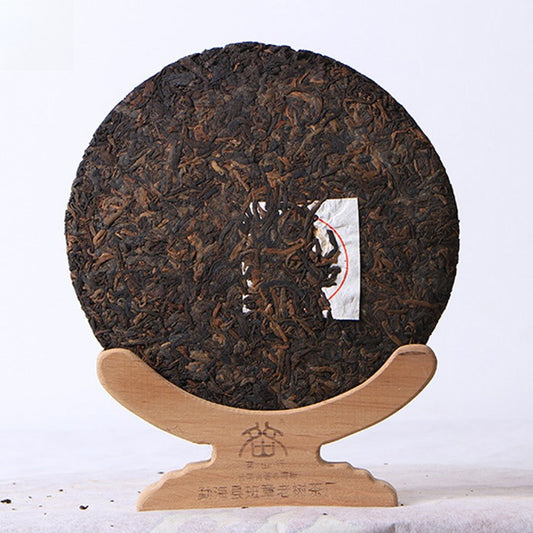
![2012 Spring Yunnan Shu Puer Tea Cake [Meng Ku]](http://yiqinteahouse.com/cdn/shop/files/f0bc4ec74aefc51bee45d8de4b1697c6.jpg?v=1760995015&width=533)
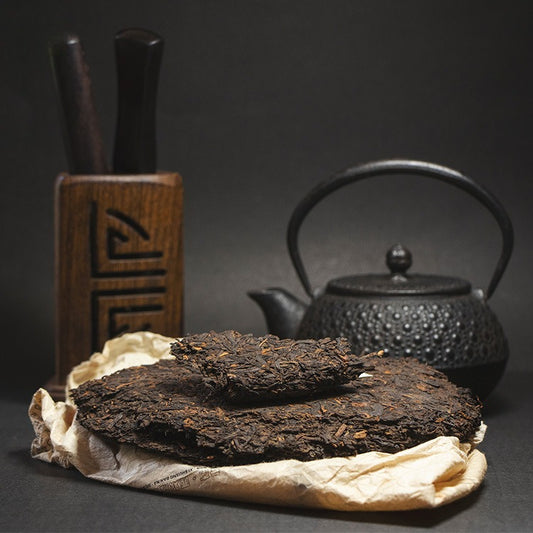
![2012 Spring Yunnan Sheng Puer Tea Cake [Meng Song]](http://yiqinteahouse.com/cdn/shop/files/6c03a7dfcfbe7cafdadd1c1d1ccde1fa.jpg?v=1760921279&width=533)
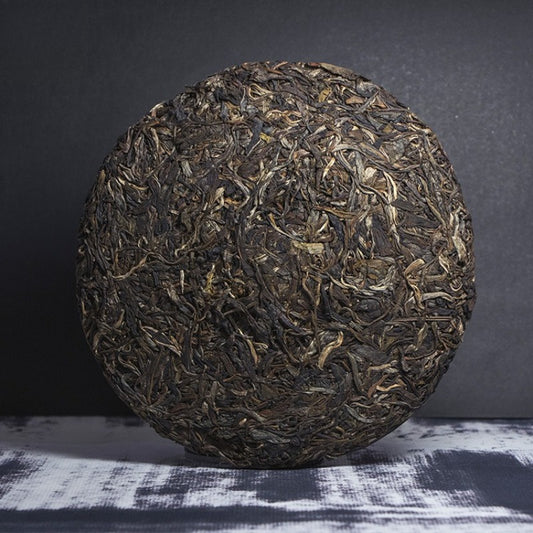
![2016 Spring Yunnan Sheng Puer Tea Cake [Bulang]](http://yiqinteahouse.com/cdn/shop/files/ee82e98fd5a64cd32628c8c49c203dd0.jpg?v=1760081298&width=533)

![2012 Spring Yunnan Sheng Puer Tea Cake [Jingmai]](http://yiqinteahouse.com/cdn/shop/files/2671cdb6f5d7c21f6a0a4836392a97bc.jpg?v=1760079378&width=533)
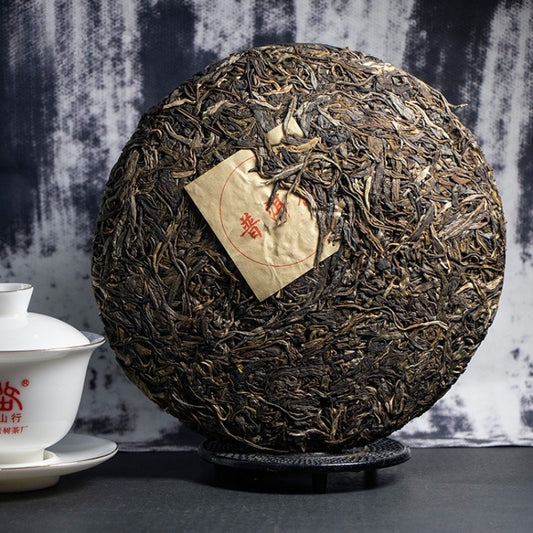
![2012 Spring Yunnan Sheng Puer Tea Cake [Chun Yun]](http://yiqinteahouse.com/cdn/shop/files/08eced7f4d304cf462efee20e5109ecf.jpg?v=1760060196&width=533)
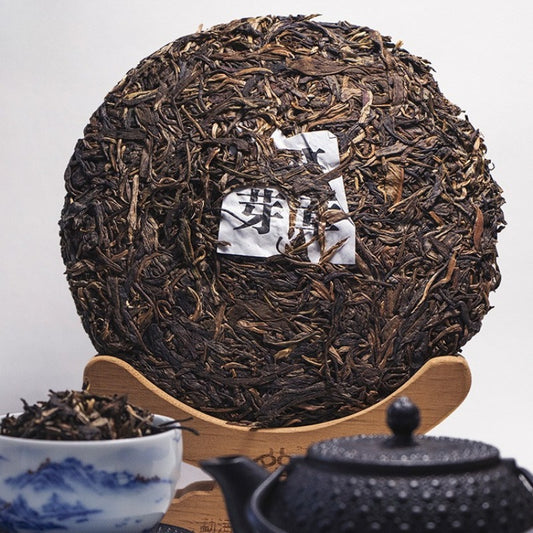
![2012 Spring Yunnan Sheng Puer Tea Cake [Yi Wu]](http://yiqinteahouse.com/cdn/shop/files/e617f38d72829b141700361fd49d51b4.jpg?v=1759994281&width=533)
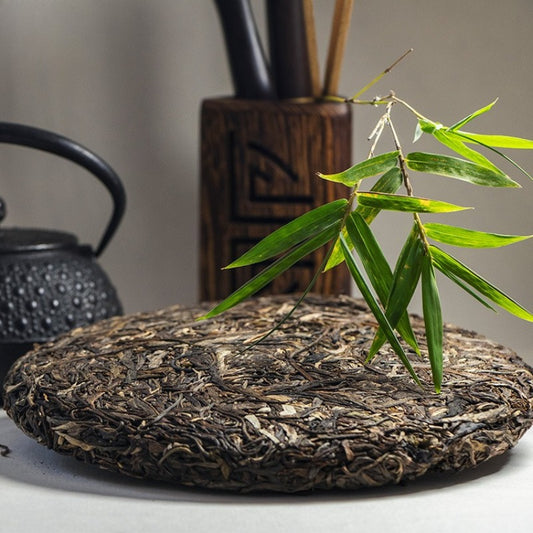
![2012 Spring Yunnan Shu Puer Tea Cake [Yi Wu]](http://yiqinteahouse.com/cdn/shop/files/6e66d7b7ec96cf308a2127efdabf62cc.jpg?v=1759986732&width=533)
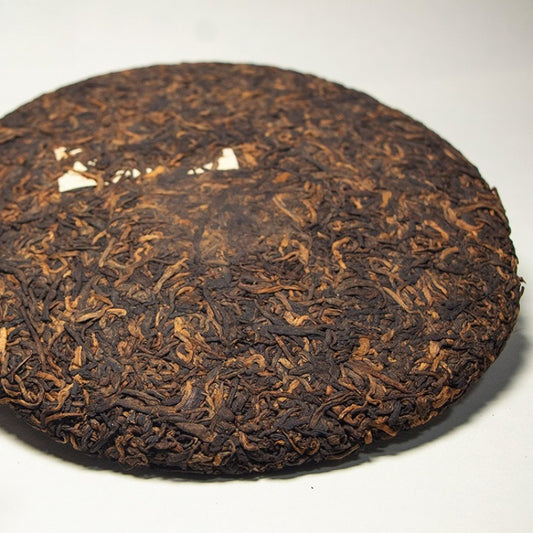
![2012 Spring Yunnan Premium Shu Puer Tea Cake [Xiao Hu Sai]](http://yiqinteahouse.com/cdn/shop/files/35ab8272923700d51551aedb2c95200d.jpg?v=1759984257&width=533)
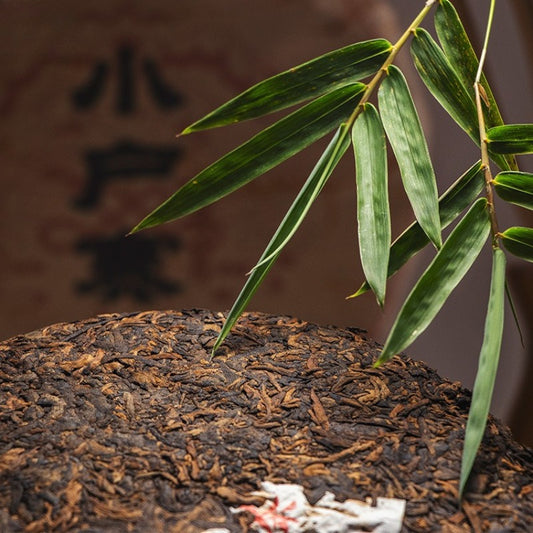
![2012 Spring Yunnan Shu Puer Tea Cake [Buland Chun]](http://yiqinteahouse.com/cdn/shop/files/5bd875ffb6d6926a02262ed0e31aad3f.jpg?v=1759972408&width=533)
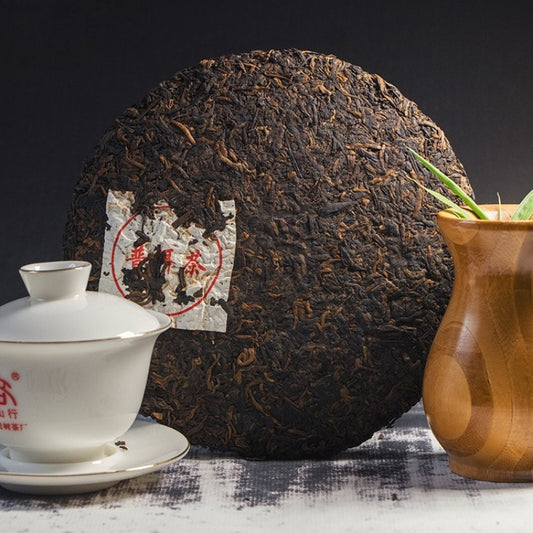
![Premium Yunnan [Mandarin Puer] Dark Tea (Mini Tea Cake) Canned Gift Set 250/500g](http://yiqinteahouse.com/cdn/shop/files/0483bfe08b197fff796a87bdbc71789b.jpg?v=1735970560&width=533)
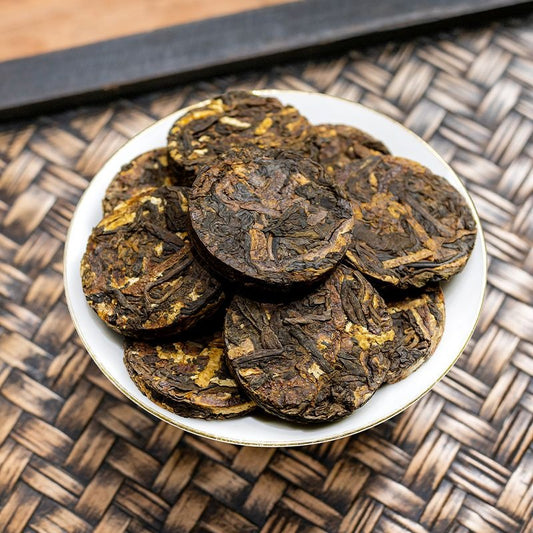
![2022 Spring Yunnan Sheng Puer Tea Cake [Red Rose] - YIQIN TEA HOUSE | yiqinteahouse.com | dark tea, pu-er, puer, sheng puer, tea](http://yiqinteahouse.com/cdn/shop/files/2022-spring-yunnan-sheng-puer-tea-cake-red-rose-yiqin-tea-house-yiqinteahouse-com-1.jpg?v=1723794180&width=533)
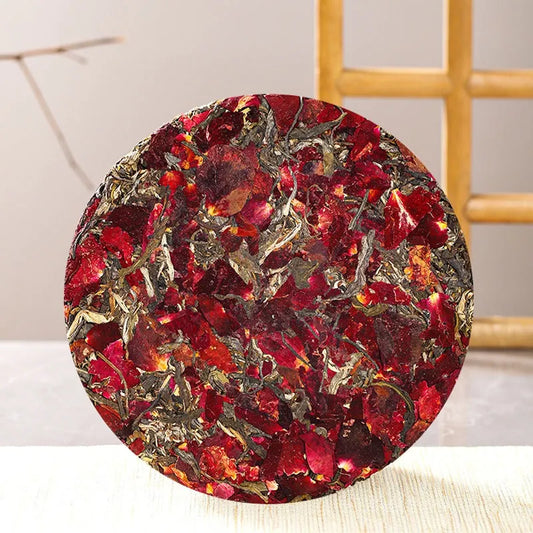
![2020 Spring Yunnan Sheng Puer Tea Cake [Man Nuo] - YIQIN TEA HOUSE | yiqinteahouse.com | dark tea, pu-er, puer, sheng puer, tea](http://yiqinteahouse.com/cdn/shop/files/2020-spring-yunnan-sheng-puer-tea-cake-man-nuo-yiqin-tea-house-yiqinteahouse-com-1.jpg?v=1723794210&width=533)
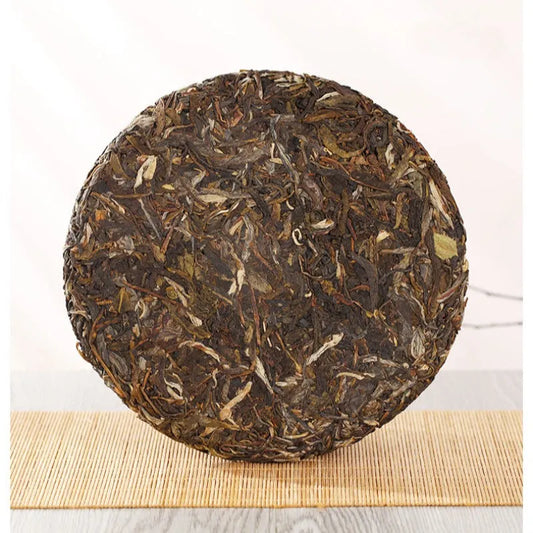
![2017 Spring Yunnan Shu Puer Tea Cake [Golden Needle] - YIQIN TEA HOUSE | yiqinteahouse.com | dark tea, pu-er, puer, shu puer, tea](http://yiqinteahouse.com/cdn/shop/files/2017-spring-yunnan-shu-puer-tea-cake-golden-needle-yiqin-tea-house-yiqinteahouse-com-1.jpg?v=1723794194&width=533)
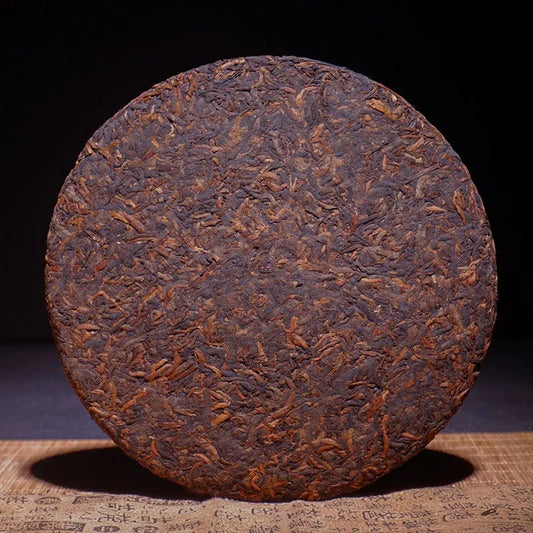
![2020 Spring Yunnan Sheng Puer Tea Cake [Guafengzhai] - YIQIN TEA HOUSE | yiqinteahouse.com | dark tea, pu-er, puer, sheng puer, tea](http://yiqinteahouse.com/cdn/shop/files/2020-spring-yunnan-sheng-puer-tea-cake-guafengzhai-yiqin-tea-house-yiqinteahouse-com-1.jpg?v=1723794173&width=533)
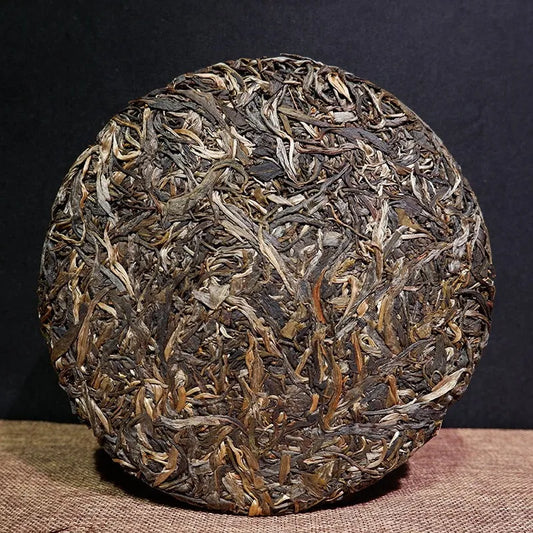
![2021 Spring Yunnan Yiwu Sheng Puer Tea Cake [Bo He Tang] - YIQIN TEA HOUSE | yiqinteahouse.com | dark tea, pu-er, puer, sheng puer, tea](http://yiqinteahouse.com/cdn/shop/files/2021-spring-yunnan-yiwu-sheng-puer-tea-cake-bo-he-tang-yiqin-tea-house-yiqinteahouse-com-1.jpg?v=1723794161&width=533)
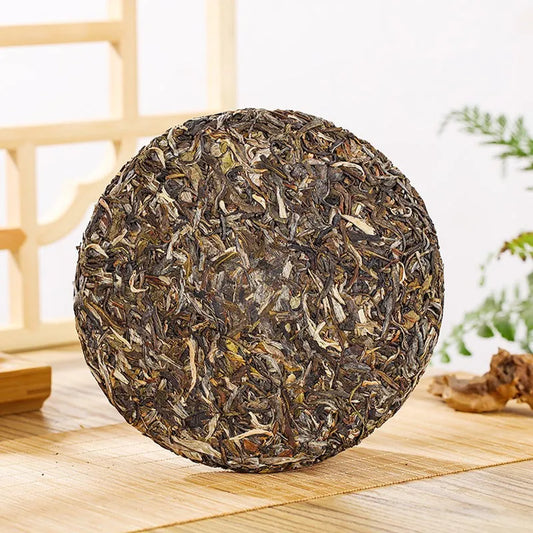
![2009 Spring Yunnan Shu Puer Tea Cake [Cang Shan] - YIQIN TEA HOUSE | yiqinteahouse.com | dark tea, pu-er, puer, shu puer, tea](http://yiqinteahouse.com/cdn/shop/files/2009-spring-yunnan-shu-puer-tea-cake-cang-shan-yiqin-tea-house-yiqinteahouse-com-1.jpg?v=1723791472&width=533)
